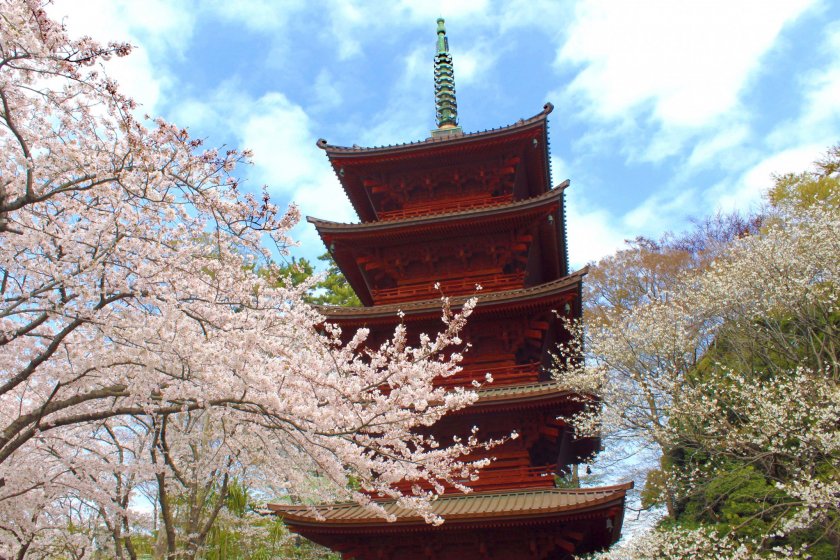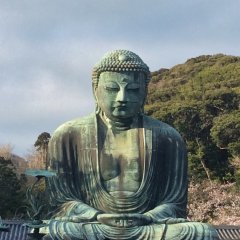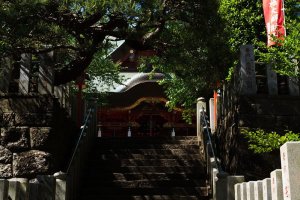Overview
The northern region of Chiba Prefecture, stretching from Noda City in the North to Funabashi City along Tokyo Bay, once known as the Higashi Katsushika District, is replete with scenic and historic temples. Many of these temples are renowned for seasonal displays of flowers and popular cherry blossom and autumn foliage view spots. The district is easily accessible from Tokyo on the Joban local and express and Keisei Lines.
Fuse Benten

Popularly known as Fuse Benten, Koryuzan Fuse Benten Tokai-ji in Kashiwa City is a richly decorated and ancient Shingon Buddhist temple with a view of the Tone River and Tsukaba Mountain beyond. This pilgrimage site dedicated to Benzaiten, one of the Seven Gods of Good Fortune, is revered by locals and visitors alike. Have a look at the kanban signboard above the gate inscribed with an enigmatic Edo era rebus puzzle. You can enjoy a cup of amazake at the little shop in front, or a bowl of soba noodles at the café within the temple precinct.
Kisshoin
Most of the year, Kisshoin in Kashiwa City is a sleepy mortuary temple. But in late April and early May, the temple’s garden is a great spot to view peonies nurtured for nearly 100 years and shaded by paper parasols.
Hondoji
Hondoji is a Nichiren Buddhist temple that was once ranked amongst the most significant in the region which is now Matsudo City. Today, it preserves structures from a variety of eras and spacious gardens of hydrangeas, irises, and higanbana, also known as spider lilies. Any time of year, visitors can enjoy seasonal colors. Bring your goshuin stamp book to commemorate your visit.
Manmanji
Right outside the east exit of Mabashi Station in Matsudo City is Manmanji, a Rinzai sect temple that preserves two excellent Niyo guardian statues designated as nationally important cultural properties. A few times a year, parishioners are invited to pass between the legs of these imposing statues to ward off illness and gain blessings.
Tozenji
Once sustained by vast rice fields, the Jodo sect temple Tozenji established in the 15th century was a powerful institution in what is now Matsudo City. It fell into disrepair with the ravages of time, but a succession of priests preserved the temple. Today, it’s noted for its seasonal beauty throughout the year – plums, cherries, hydrangeas, and maples provide a profusion of color within the temple gardens.
Hokekyo-ji

Ichikawa City's Hokekyo-ji is the home of Nichiren’s seminal work, Risshoku Ankoku Ron. The text, a national cultural treasure, is displayed at the temple once a year on November 3rd. The temple grounds are home to a number of historical structures including cultural properties. Visitors can marvel at a gorgeous pagoda and treasured statuary.

























At hanami, they're crowded, but nothing like Tokyo's spots. And much more open spaces to take photos like that one.